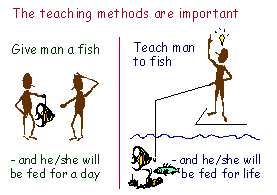
http://www.everythingesl.net/askjudie/?i=4189&n=250
Ells with learning disabilities.
by Sandy Costin on Oct 01 2006 6:09 AM
How long do you continue to service ELLs who have already been classified with learning disabilites? They will continue to qualify for services because of the disablity.
Re: Ells with learning disabilities
by Claudio A. on Nov 27 2008 2:20 PM
Nowadays, classrooms are filled with an increasing number of students who have been identified as having "special needs", from English language learners, to children with behavioral problems, to those with learning disabilities, as well as some who are labeled "gifted and talented." Experienced teachers know, though, that every student has special needs on some days, and will sometimes be gifted and talented. Part of the skill of teaching involves being able to respond to those needs in a way that helps each student learn. These days, with the increasing diversity of classrooms coupled with pressure to cover more curriculum in less time and have all students perform at a standard level, even the best teachers can benefit from having a collection of best practices for differentiating instruction at hand.
I personally believe that those students must have access to high-quality instruction designed to help them meet high expectations. Teachers should employ strategies known to be effective with English learners, such as drawing on their prior knowledge; providing opportunities to review previously learned concepts and teaching them to employ those concepts; organizing themes or strands that connect the curriculum across subject areas; and providing individual guidance, assistance, and support to fill gaps in background knowledge. Another examples of sheltered English techniques are the use of visual aids, such as props, pictures, gestures, and facial expressions, to help convey meaning; encouraging children to expand and elaborate their responses to help develop oral expression abilities; and structuring oral input based on the level of understanding that children have.






